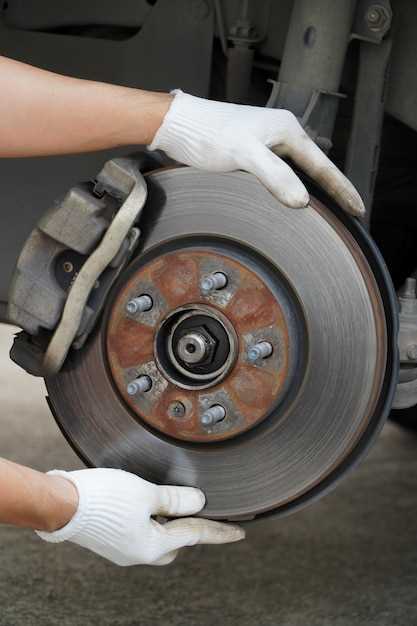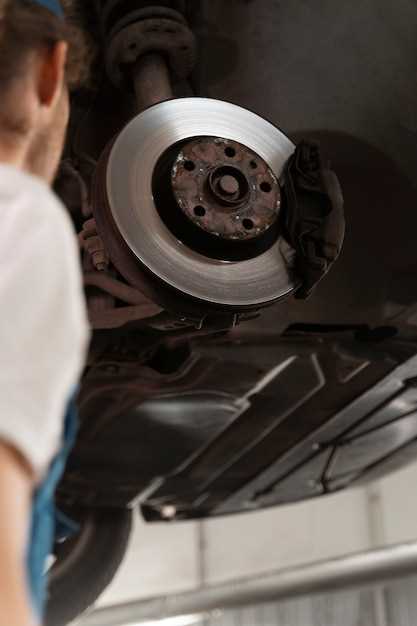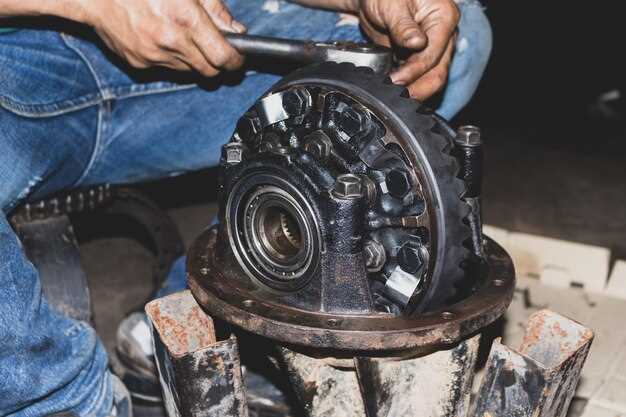
When it comes to vehicle maintenance, the significance of quality brake components cannot be overstated. Brakes are a critical aspect of automotive safety, directly impacting a driver’s ability to control their vehicle in various conditions. Investing in quality replacement parts is essential not only for performance but also for ensuring the safety of everyone on the road.
The selection of brake components involves more than just picking the cheapest option; it requires careful consideration of materials, design, and compatibility with your vehicle’s specifications. High-quality replacement brakes can enhance stopping power, reduce noise, and ultimately contribute to a smoother driving experience. Understanding the differences between various brake systems and their components can lead to more informed choices and better overall performance.
Furthermore, the type of driving you do–whether it’s city commuting, highway travel, or off-road adventures–can significantly influence the type of brake components you should choose. Making the right decision not only improves your vehicle’s efficiency but also helps avert potential accidents caused by insufficient braking performance. Therefore, focusing on quality brake components is not merely an option, but a necessity for every mindful driver.
Identifying Key Characteristics of High-Quality Brake Pads

When it comes to vehicle safety and performance, selecting high-quality brake pads is essential. Brake pads are critical components of the braking system, responsible for creating the friction needed to stop a vehicle effectively. Therefore, understanding the key characteristics of these parts can guide you in making informed replacement choices.
First and foremost, high-quality brake pads should be made from superior materials. Look for options that utilize advanced composites, which offer better heat resistance, durability, and overall performance. Ceramic and semi-metallic brake pads are popular choices, as they tend to provide excellent stopping power while minimizing noise and dust production.
Another crucial aspect is the manufacturing process. Brake pads that undergo rigorous quality control and testing ensure that they meet or exceed industry standards. Certifications from recognized organizations can be a strong indicator of reliability and performance. It’s advisable to choose pads from reputable manufacturers known for producing quality automotive parts.
Also, consider the friction coefficient of the brake pads. A higher friction coefficient typically translates to better stopping distances and improved safety. However, balance is key; overly aggressive pads may lead to increased wear on rotors and reduced longevity. Aim for a product that offers an optimal blend of performance and durability.
Noise and dust generation are additional factors to evaluate. High-quality brake pads often feature advanced designs that mitigate squeaking and dust accumulation. Low-noise formulas reduce the likelihood of disturbances during operation, while dust-reducing properties help maintain the cleanliness of wheels and the surrounding area.
Lastly, pay attention to user reviews and expert recommendations. Feedback from other drivers can provide valuable insights into the real-world performance of specific brake pads. A product that consistently receives positive reviews is more likely to be a wise choice for your braking system.
Understanding the Importance of OEM vs. Aftermarket Brake Parts
When it comes to brake components, choosing the right replacement parts is crucial for both safety and vehicle performance. Original Equipment Manufacturer (OEM) parts and aftermarket parts each have distinct characteristics that can significantly impact the quality and reliability of the braking system.
OEM brake parts are produced by the vehicle’s manufacturer. They are designed specifically for a particular make and model, ensuring perfect fit and compatibility. The quality of these parts is closely regulated, providing assurance of durability and performance that aligns with the manufacturer’s standards. This is especially important for critical safety systems like brakes, where subpar components could lead to failure.
In contrast, aftermarket brake parts are made by third-party companies and may vary widely in quality. While some aftermarket parts can offer competitive performance and a lower price point, others might compromise on quality. Consumers must be cautious when selecting these parts, as not all aftermarket options fulfill the necessary safety and performance requirements. It is essential to do thorough research and read reviews to ensure the chosen aftermarket parts are reliable.
Ultimately, the decision between OEM and aftermarket brake parts should consider factors such as budget, quality, and intended use of the vehicle. For those prioritizing safety and performance, OEM parts often provide the most reliable choice. However, those looking for more cost-effective solutions can find quality aftermarket replacements if they choose wisely.
Recognizing Signs That Indicate Brake Component Replacement

Brake systems are critical for vehicle safety and effective performance. Recognizing the signs that indicate the need for replacement of brake components can prevent accidents and ensure smooth driving. Here are key indicators to watch for:
1. Squeaking or Squealing Noises: One of the most common signs of worn brakes is the sound of squeaking or squealing. This noise often suggests that the brake pads have worn down to the wear indicators, signaling that replacement is necessary.
2. Grinding Sounds: If you hear a grinding noise when applying the brakes, it could mean that the brake pads are completely worn out. This can lead to damage to the brake rotors, resulting in a more expensive repair if not addressed promptly. Quality replacement pads should be used to restore performance.
3. Vibration During Braking: A pulsation or vibration felt in the brake pedal when slowing down can indicate warped rotors. This problem requires immediate inspection and, frequently, the replacement of the rotors to maintain the integrity of the braking system.
4. Reduced Responsiveness: If your vehicle’s brakes feel less responsive or require more effort to engage, it may be a sign that brake fluid is low, or the brake components are deteriorating. Regular checks and quality replacements are essential to ensure optimal performance.
5. Dashboard Warning Lights: Many modern vehicles are equipped with dashboard warning lights that alert drivers to potential brake issues. If any brake-related lights illuminate, such as the brake warning or ABS light, it’s crucial to have the systems checked without delay.
6. Pulling to One Side: If your vehicle pulls to one side when braking, it may indicate uneven wear on brake pads or issues with the brake calipers. This condition not only compromises safety but also affects overall vehicle performance, necessitating quality replacements.
7. Fluid Leaks: Inspect the garage floor for signs of brake fluid leaks. Low brake fluid levels can lead to a significant drop in braking performance, requiring immediate attention and potential component replacement.
Regular maintenance and timely recognition of these signs can help drivers ensure that their brakes remain in top condition. Always opt for quality components during replacements to enhance safety and performance. Checking brakes regularly can prevent costly repairs and safeguard against accidents.

